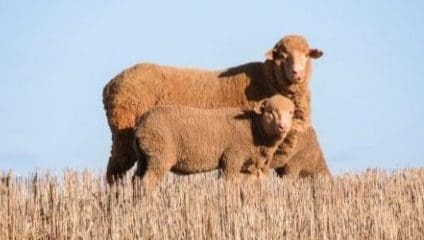
Fewer sheep and more cropping in Western Australia.
FEWER sheep is meaning more land going into cropping in Western Australia, according to the Grain Industry Association of WA.
In his February 2025 crop report, author Michael Lamond said the trend of increasing cropped area in WA was likely to continue due to the exodus of sheep from the state.
“For every 1 million sheep that leave farms and are not replaced, an extra 300,000-500,000ha are available for cropping, depending on the rainfall zone.”
Mr Lamond said the area of crop has increased in the medium to higher rainfall zones of WA, where sheep have become less important.
“The change in crop area from 2023 to 2024 highlights this, with an increase of 7-10 percent in crop area being substituted from pasture due to the exodus of sheep.
“The crop area had been gradually increasing over the past five to 10 years; however, the contribution to the state’s tonnage is proportionally higher than the area suggests, simply because the majority of the area switching from sheep production to cropping is in the higher and more consistent rainfall zones,” he said.
“This is clearly demonstrated in the Albany port zone, where the tonnage produced in 2024 was the highest on record for that zone.
“It was a good year in that zone with virtually no frost or waterlogging, but the increased crop area also influenced this result.”
GIWA’s latest estimate for the 2024-25 WA crop is 22.42 million tonnes (Mt).
This is up from 19.88Mt estimated in GIWA’s report issued in December, when harvest was still under way, and makes the harvest the third-largest on record for WA, behind 24Mt in 2021-22, and 26Mt in 2022-23.
Mr Lamond has referenced the warmth of the winters in each bumper year, with 2021 the warmest winter on record, before 2022 was 7 percent warmer, and 2024 was warmer still.
“This trend of warmer growing seasons appears to be an overriding influence on grain production in Western Australia,” Mr Lamond said in the report.

Unfortunately, as sheep number reduce so do our rural communities.
Our local footy team (A and B grades) was 30 percent indigenous, 30pc sheep farmers, 30pc shearers and stock handlers and 10pc others.
With the reduced sheep numbers we lost our footy club, then our hotel, our hockey and netball clubs. We now have magnificent facilities, all unused.
Stopping live export is the biggest factor in the sheep decline because live export added value to all sheep in the industry and created a level of confidence and stability that is critical to the future of sheep and the dependent communities.
Yes Mal, this seems a long-winded way of a death by a thousand cuts of killing off country towns, country lifestyle, country people and farming with sheep.
If the business of live export were to die a ‘natural death’ by farmers choosing not to utilise it, that is different to the Labor Government imposed and backed stopping of it.
One has the feeling that most, if not all, the people against this business model of exporting live sheep have little or no real connection with the reality of sheep farming. They are prepared to sacrifice the livelihoods of many people, for their green/woke agendas. This is not right and our federal and state governments need to do much more to support a valid industry that supports our farmers and their lives in our country.